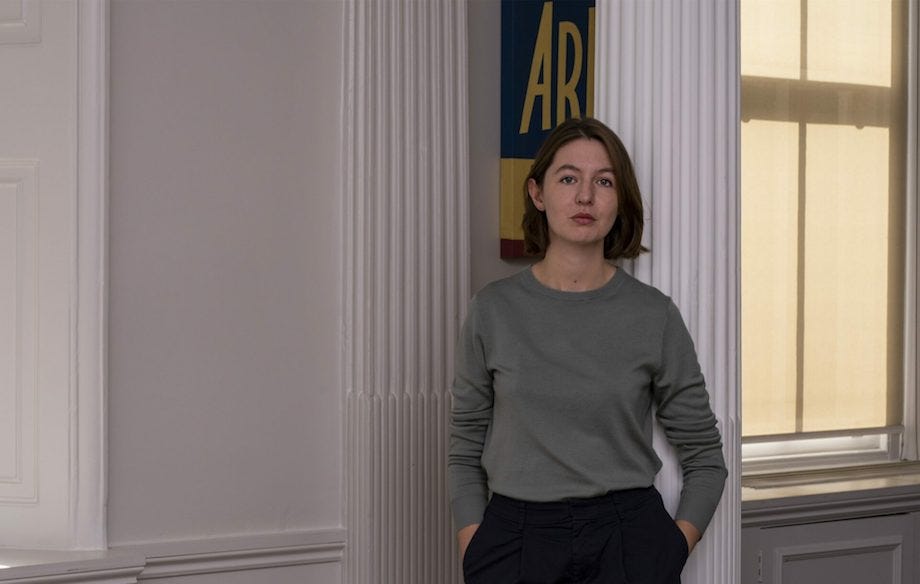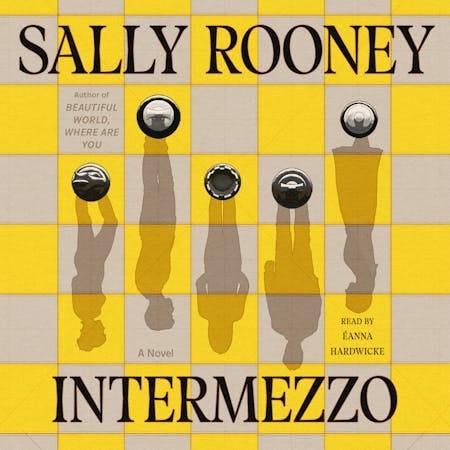The media shill for Sally Rooney
She's been called 'the book world's Taylor Swift,' but that's not enough for New York Times

You might think the media have been more than fair to Sally Rooney.
Journalists have called her “the book world’s Taylor Swift” and the most talked-about novelist of her generation.” The editors of Time put her on a list of “100 Most Influential People” in the world.
But hype like that isn’t enough for the New York Times. Or so it appears from its recent opinion piece called “Sally Rooney Deserves Better Than This.”
Better than what? you might wonder.
Better than having her novels Normal People and Conversations With Friends made into two acclaimed 12-part BBC miniseries?
Better than being longlisted for major prizes like the Man Booker and published and profiled in The New Yorker?
Better than earning the eight-figure advances that any competent agent might land for her at this point?
Yes, a Times “guest essay” argued, the Irish novelist has been wronged. A literary website treated her unfairly. One of its critics had conflated Rooney with a character in her Beautiful World, Where Are You, calling Alice “an obvious stand-in for Rooney.”
That rookie misstep, the Times essay implied, was sexist. It reflected a cultural tendency “to conflate female novelists with their characters and misunderstand them as being somehow incapable of the imaginative work of novel-writing.”
The idea that this happens only—or even mainly—to women is so absurd, you’d think it would be obvious to any veteran observer of the publishing industry. But apparently it wasn’t to Times editors.
So let’s spell it out: Critics have always conflated male novelists with their fictional alter egos or others. They’ve confused Philip Roth with Nathan Zuckerman, John Updike with Rabbit Angstrom, and Saul Bellow with Augie March.
Yet the Times gave more than 1,000 words of prime real estate to the perceived slight to Rooney, the equivalent of going after a field mouse with a howitzer. Its guest essay ran during a week in which America’s newspaper of record gave another 1,000 words to an interview with Rooney, 1,000 more to a review of her new Intermezzo, and 800 to a news story on her fans.
All of this might have been justified if Rooney had been a literary titan—her country’s new James Joyce, let’s say—instead of just another precocious literary newcomer.
But she isn’t even Ireland’s best writer: That’s arguably Claire Keegan, a writer similarly heaped with prizes and glowing reviews.
Unlike Keegan and other eminent Irish novelists such Colum McCann and Anne Enright, Rooney isn’t in Aosdána, 250-member group of artists who have made a distinguished contribution to arts in Ireland, selected by their peers.
So why is Rooney being hailed as “the book world’s Taylor Swift” and not Keegan or another novelist?
An obvious answer is that the millennial Rooney is 33, and the Gen X-er Keegan is 56, a later bloomer, in an industry that prizes youth and novelty.
Rooney, a self-described Marxist, also shares the progressive ideals that hold sway in publishing. Keegan has described her best-known book, Small Things Like These, partly as “a portrait of how difficult it was to practice being a good Christian in Catholic Ireland,” a theme that could hardly be less fashionable. And unlike Keegan’s, Rooney’s books have a lot of sex, which doesn’t hurt when you’re trying to sell books.
It’s not that Rooney isn’t intelligent. Nor is that she has no talent, although hers comes heavily tarted up with on-trend devices such as present-tense narration, no quotation marks, and clipped sentences, often shorn of subjects or verbs.
It’s just that the media have praised Rooney far out of proportion to the talents she has. They’ve lost all shame, shilling for her instead of giving a more accurate or nuanced portrait of her place in the literary galaxy.
No journalists, for example, seem to have seriously challenged her claim that she’s a Marxist. They haven’t asked the logical follow-up questions it suggests: How does she apply to her own wealthy the Marxist principle of “From each according to his (or her) ability, to each according to his needs”? How much of her income does she give away, and to whom? Is she Marxist only in theory, or in ways that affect her everyday life?
You can hear the sound of punches being pulled in reviews and news stories alike. One writer who has written more frankly than most about Rooney is the Guardian columnist Emma Brockes, who wrote, before Intermezzo came out:
“Rooney’s heroines are, without fail, always the smartest people in the room. They are also pretentious, priggish, self-absorbed and superior, condescending and driven by insecurity. They put me in mind, occasionally, of people I remember from university, those students who hung around outside the union on election day, shouting, ‘Apathy led to the rise of Hitler!’ at politically disengaged students as they passed.”
The Guardian’s Brockes also pushed back on Rooney’s claim that fame was “hell.” She elicited the clarification that what Rooney meant by “hell” was that fame brought writers “serious invasions of their privacy from the media, from obsessive fans, and from people motivated by obsessive hatred.”
That’s fair enough. Yet the media still seem too timid to ask is: If you hate fame so much, why do you keep doing interviews?
Writers may need to do those early in their careers or risk losing the goodwill of their publishers and fans.
But Rooney reached the point at which she no longer needs the exposure. She could do a full Salinger or Pynchon and just stop talking to the media.
If she doesn’t, journalists will only embarrass themselves further if they keep fawning over her. They might to begin to remedy that by noting the obvious: If Rooney’s fame is “hell,” it’s a hell most writers would die for.
@janiceharayda is an award-winning critic and journalist who has been the book columnist for Glamour, the book editor of a large newspaper, and a vice president of the National Book Critics Circle. In addition to all the free stories on Jansplaining, paid subscribers get access to the “100 Books I Like Section,” which has capsule reviews of 50 of my favorite novels and will expand to include 50 nonfiction and children’s books.





Claire Keegan. My admiration knows no bounds. Especially after seeing that she’d said ’the art of writing fiction is the art of making pictures.’
Thank you for recognizing Claire Keegan. She is mesmerizing